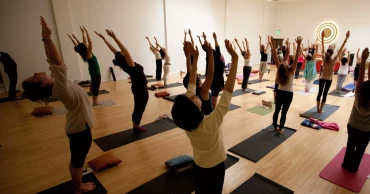Reiki
10 Energy Healing Methods: Which One is Right for You?
Energy healing manipulates the "energy fields" of the human body to promote balance. Whether seeking relief from pain or enhancing overall well-being, energy healing can help. It's an alternative therapy used for centuries across different cultures. Believing that the human body has an energy system, several types of energy healing methods are practiced around the world. Each kind of energy healing bestows unique benefits. Let’s explore 10 energy healing methods.
10 Popular Energy Healing Methods
Yoga
Yoga is a centuries-old practice that combines physical postures, breathing techniques, meditation, and the chakra system to promote holistic healing and wellness. Various forms of yoga exist that focus on energy healing, such as Kundalini, Iyengar, and Vinyasa.
Kundalini yoga emphasizes the awakening of energy within the body, Iyengar yoga emphasizes proper alignment to promote energy flow, and Vinyasa yoga uses movement and breath to enhance the flow of prana, or life force energy, throughout the body.
Read More: Which Type of Yoga Should You Try?
Yoga first originated almost 5000 years ago in ancient India. It can provide numerous benefits, including reduced stress, improved flexibility and strength, and enhanced mental clarity and focus. However, it is important to approach yoga with caution and consult with a qualified teacher, as certain postures and practices may not be suitable for everyone, especially those with certain health conditions or injuries.
Reiki
Reiki is a form of energy healing that originated in Japan in the early 20th century. It is based on the concept that there is a universal life force energy that flows through all living things, and when this energy is blocked or disrupted, it can cause physical or emotional distress.
During a Reiki session, the practitioner uses their hands to channel this energy into the recipient's body, helping to remove any blockages and promote balance and harmony. The benefits of Reiki can include relaxation, emotional release, and an overall sense of well-being. There are minimal risks associated with Reiki, as it is non-invasive and gentle.
Read More: What is Reiki? Does It Really Work?
Massage
Massage is a popular and ancient form of energy healing that uses various techniques to manipulate the body's energy and promote relaxation. The origins of massage can be traced back to ancient China, Egypt, and India. During a session, the therapist uses their hands and sometimes other tools to apply pressure to different parts of the body, helping to release tension and improve blood and lymphatic circulation.
Massage has been shown to have numerous benefits, including reducing stress, easing muscle pain, and improving sleep quality. It is generally considered safe, but certain conditions may require caution or avoidance of massage, such as deep vein thrombosis or infectious skin diseases.
Reflexology
Reflexology is an energy healing practice that utilizes specific pressure points on the feet, hands, and ears to stimulate healing. Practitioners believe that these pressure points correspond to different organs and systems in the body, and by applying pressure, energy can flow freely and balance can be restored. Reflexology was invented in Egypt and was practiced from 2500 BC.
Read More: Happiness Hormone: Ways to Boost Dopamine
Reflexology can promote relaxation, improve circulation, and reduce stress and anxiety. Some individuals may experience discomfort or soreness during a session, and reflexology is not recommended for individuals with foot injuries or certain medical conditions.
Craniosacral
Craniosacral therapy is an alternative healing technique that involves a gentle touch approach to assess the movement of fluids surrounding the central nervous system. This therapy is designed to relieve stress, tension headaches, and neck pain by targeting the areas that are causing discomfort. It is believed that craniosacral therapy can also help restore balance and promote wellness after experiencing traumatic injuries.
The origin of this practice can be traced back to osteopathy and cranial osteopathy, which was developed by Andrew Taylor Still. He invented it as a way to remove restrictions in human skulls in a toxic-free way. The main benefit of craniosacral therapy is its ability to provide relief from chronic pain without invasive procedures or medications.
Read More: Workplace stress affecting women in Bangladesh needs attention
However, as with any therapy, there are risks involved, such as potential side effects or adverse reactions. It is important to consult with a qualified practitioner before undergoing this therapy.
2 years ago
What is Reiki? Does It Really Work?
Pain and discomfort are a part of life, but finding ways to manage and alleviate them is essential for maintaining physical, emotional, and mental health. Traditional medical treatments are often effective, but some people turn to complementary and alternative therapies to supplement their care. One such therapy is Reiki, a Japanese healing practice that involves a practitioner placing their hands on or near the body to promote relaxation, balance, and healing.
What is Reiki?
Reiki is a holistic healing practice rooted in ancient Eastern beliefs about energy flow in living beings. Its name derives from the Japanese words "rei" and "ki", which translate to "universal" and "vital life force energy", respectively. Some practitioners compare it to acupuncture without needles.
At the core of Reiki is the concept of energy fields that support our health and well-being. Practitioners use their hands to sense and treat energy blocks that can impede the natural flow of energy in the body. They believe that these blocks not only cause physical ailments but can also manifest as negative life circumstances like financial struggles or relationship problems.
Read More: Happiness Hormone: Ways to Boost Dopamine
Reiki is not limited to humans; some practitioners also work on animals and plants. By focusing on moving energy for the greater good of the client, Reiki aims to improve physical, emotional, and spiritual well-being. As a complementary health approach, it is often used in conjunction with traditional medical treatments.
How does Reiki Work?
Reiki is based on the belief that all living beings have a vital life force energy that flows through them, known as "ki" or "qi". When this energy is blocked or out of balance, it can manifest as physical, emotional, or spiritual issues. Reiki practitioners aim to restore balance and promote healing by working with this energy.
During a Reiki session, the client lies down fully clothed while the practitioner places their hands on or near different areas of the body. The practitioner uses their hands to sense the client's energy flow and move any blocks or imbalances. This is done through a series of hand placements and can include techniques such as light touch, tapping, or visualization.
Read More: Workplace stress affecting women in Bangladesh needs attention
2 years ago



